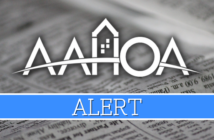Remote-work software and technology have proliferated in the corporate sector during the pandemic. The prototypical workplace has changed and work-from-home policies are the new paradigm. The communications technology market, now dominated by the likes of Zoom and Microsoft, grew immensely as businesses closed their offices and sent their workforce home in compliance with lockdown measures. Hybrid and remote working arrangements have proven flexible and efficient stand-ins for the in-person corporate office. This telework technology has changed the calculus for commercial travel, and hoteliers must look to technology and consumer confidence to dictate the new normal in hospitality.
As all hoteliers know, the remote-work model does not apply to our industry, which has continued to operate on the frontline. We are a service industry, one that requires an onsite workforce to host guests, clean rooms, and perform other tasks essential to day-to-day operations. Revenue is only generated when heads are in beds. For many AAHOA Members, business travel is a vital source of income. The paradigm shift to remote work adds another speed bump on the road to recovery. What can hoteliers do to get business travelers back on the road?
Our members are doing their part to ensure traveler comfort and peace of mind on their properties by taking the Pledge to Protect initiative and adopting industry best practices. Franchisees and independent owners alike have taken on additional operational standards to promote their properties’ enhanced protocols and new COVID-19-conscious features. State and local restrictions have eased or lifted in some cases, and the Centers for Disease Control and Prevention announced that fully vaccinated adults have low risk to their health when traveling domestically. These are encouraging signs for our industry.
In late April, STR was reporting nationwide occupancy rates above 50%, marking pandemic highs. However, their reporting notes that weekend leisure and summer vacation travel overshadow business travel as weekday occupancy rates lag behind. At a minimum, the hotel industry must consider that business travel will not return to pre-pandemic rates in the near future. The worst of the pandemic is behind us, yet there are many challenges ahead.
The proof is in the data, and the solution is in the tech. With the combination of technology and market insights, hoteliers can analyze their local market, capitalize on potential demand, and recruit and train new team members. Our industry cannot dictate when companies and branches of government reinstate their travel policies. The timeline for business travel to return remains uncertain and at the whim of local restrictions and corporate policies. There is no “catch-all” solution for markets that depend heavily on business travel. From job listings to virtual training to strategic marketing, hoteliers need to make the technology and insights work for them.



